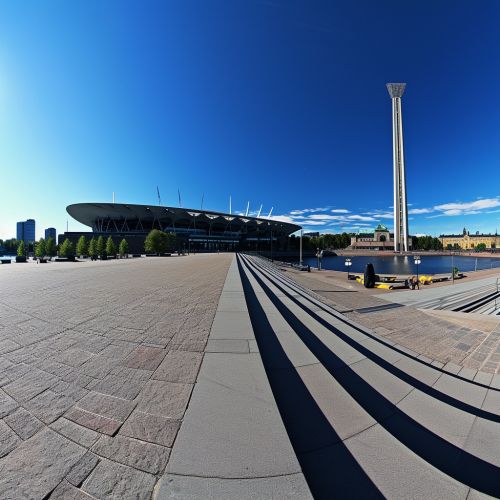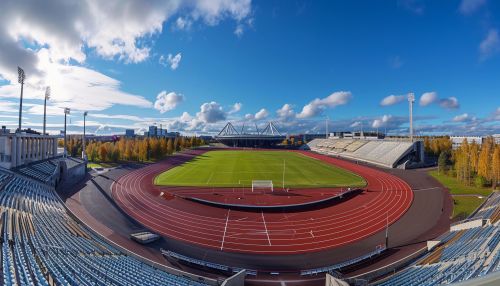Helsinki Olympic Stadium
History
The Helsinki Olympic Stadium is a historical monument in Finland, with its construction dating back to the 1930s. The idea for the stadium was first conceived in 1927, with the aim of hosting the 1940 Summer Olympics, which were initially awarded to Tokyo but later reassigned to Helsinki due to the outbreak of the Sino-Japanese War. The stadium was designed by architects Yrjö Lindegren and Toivo Jäntti, and its construction began in 1934. However, the outbreak of World War II delayed the completion of the stadium until 1938.


The stadium's first major event was the 1952 Summer Olympics, which marked the first time the Olympic Games were held in a Nordic country. The event was a significant milestone in the history of the stadium and Finland, attracting over half a million spectators. The stadium also hosted the first ever Eurovision Song Contest in 1952, further cementing its place in European cultural history.
Architecture
The Helsinki Olympic Stadium is a prime example of Functionalism, a popular architectural style in the early 20th century that emphasized practicality and functionality. The stadium's design is characterized by its simplicity, with a focus on maximizing the spectator experience. The most distinctive feature of the stadium is its 72.71-meter high tower, which provides a panoramic view of the Helsinki cityscape. The tower's height is symbolic, representing the world record for the javelin throw set by Finnish athlete Matti Järvinen in 1932.
Renovations
Over the years, the Helsinki Olympic Stadium has undergone several renovations to maintain its structural integrity and adapt to modern standards. The most significant renovation took place between 2016 and 2020, which saw the implementation of modern facilities such as a roof over the stands, improved accessibility, and upgraded sports facilities. The renovation also included the preservation of the stadium's historical elements, ensuring that the original architectural style was maintained.
Events
Apart from the 1952 Summer Olympics, the Helsinki Olympic Stadium has hosted numerous other significant events. These include the 1983 and 2005 World Championships in Athletics, the European Athletics Championships in 1971 and 1994, and the FIFA World Cup qualification matches. The stadium has also been a venue for various concerts, with performances by internationally renowned artists such as Michael Jackson, The Rolling Stones, and Bruce Springsteen.
Current Use
Today, the Helsinki Olympic Stadium serves multiple purposes. It is a venue for sports events, concerts, and other cultural events. It also houses the Sports Museum of Finland, which showcases the country's rich sports history. The stadium's tower is open to the public, offering a unique view of Helsinki. The stadium also has a restaurant and conference facilities, making it a versatile venue for various types of events.
